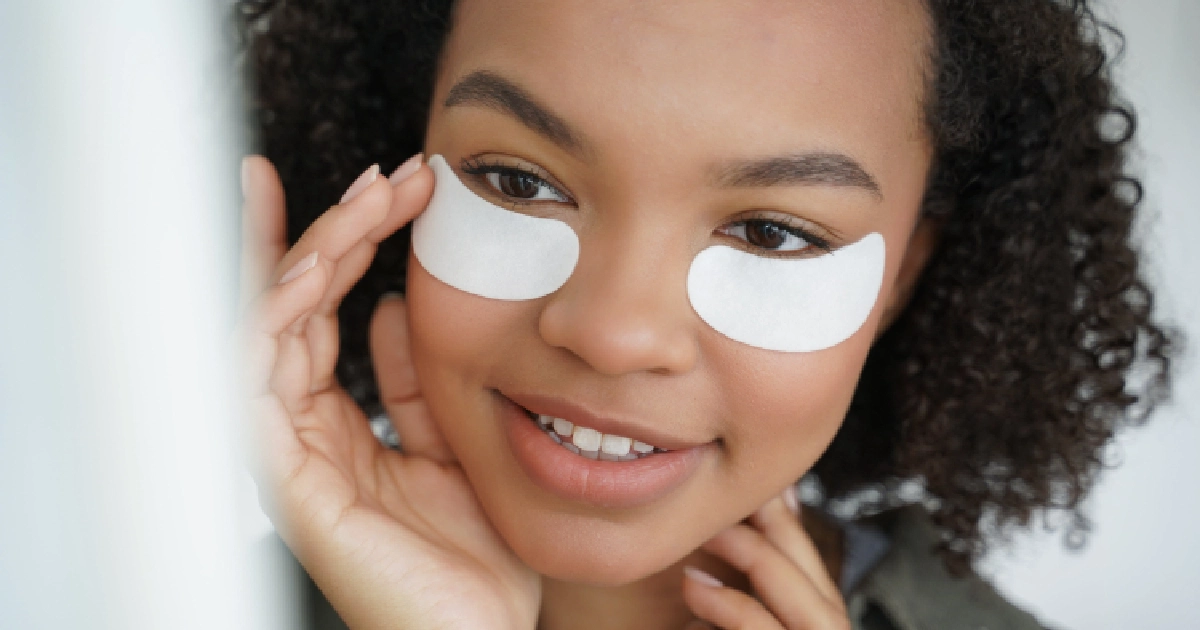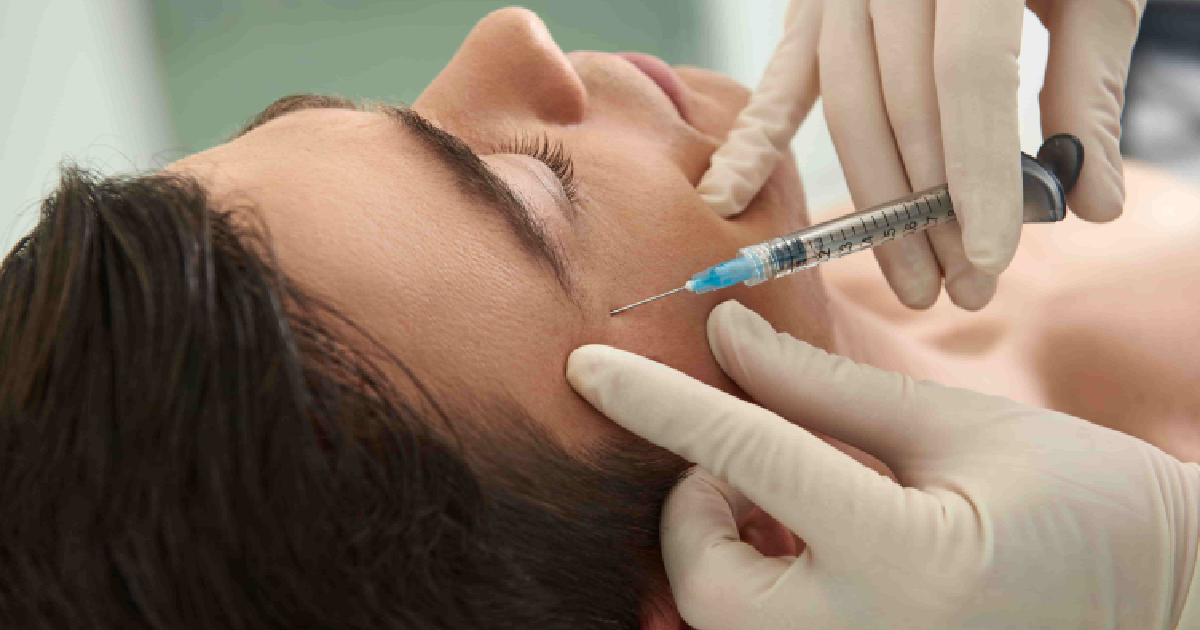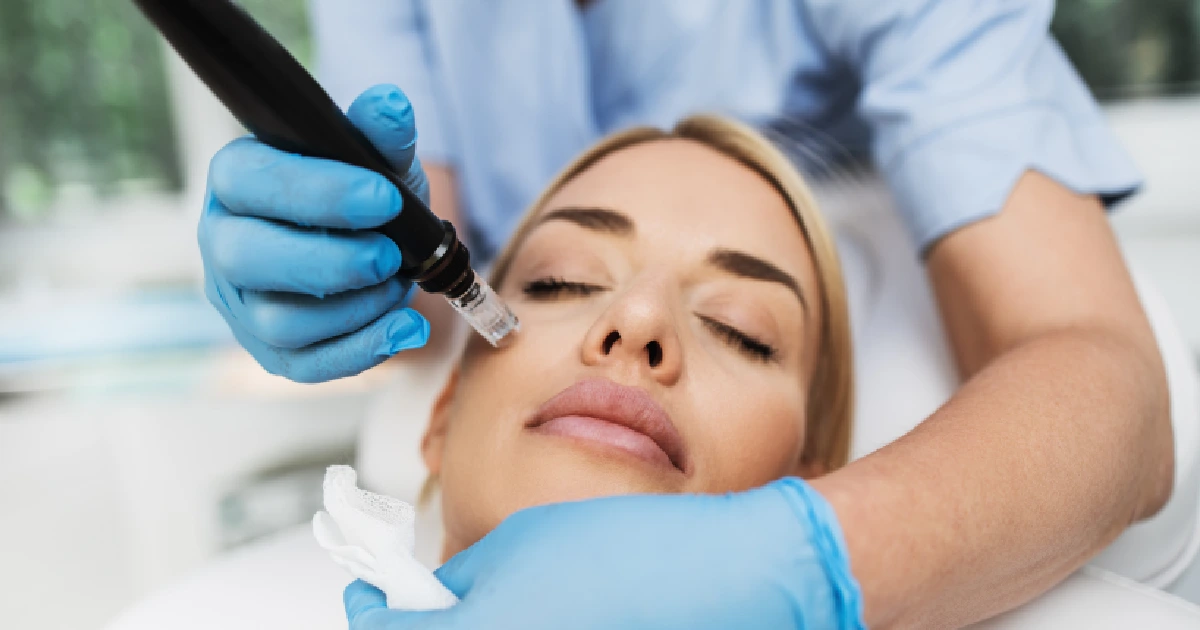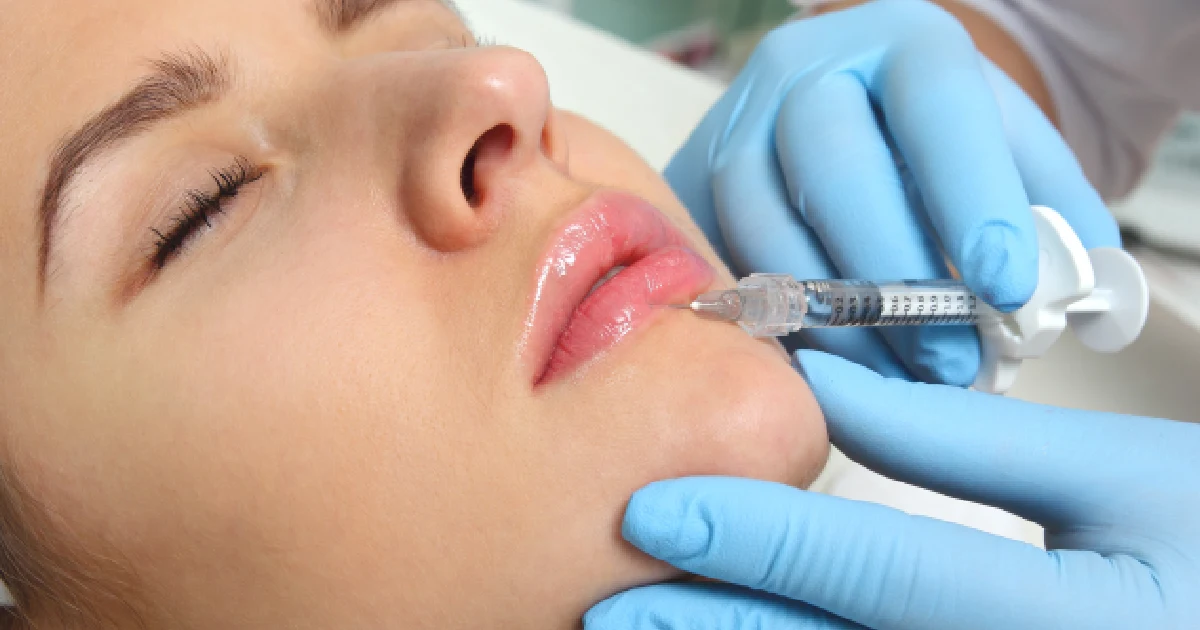Table of Contents
Introduction
Microneedling, a popular skin treatment, has evolved into a more advanced and effective technique known as regenerative microneedling. This innovative approach combines traditional microneedling with platelet-rich plasma (PRP) to enhance skin rejuvenation, reduce signs of aging, and improve overall skin health. Let’s explore regenerative microneedling, how it differs from traditional microneedling, and the benefits it offers for your skin.
Understanding Regenerative Microneedling
Regenerative microneedling is an innovative skin treatment that employs a specialized device to produce minuscule, precise punctures in the skin. This technique activates the body’s inherent repair mechanisms, spurring the production of collagen and elastin. What sets its apart from traditional microneedling is the addition of platelet-rich plasma (PRP) during the procedure.
Platelet-rich plasma, or PRP, is made from the patient’s blood and contains a lot of growth factors that hasten the regeneration and repair of damaged tissue. When PRP is applied to the skin during or after the microneedling process, it penetrates the micro-channels created by the needles, enhancing the overall rejuvenation effect.
Microneedling vs. Regenerative Microneedling
While traditional microneedling and regenerative-microneedling share similarities, the inclusion of PRP in the latter makes a significant difference in the results.
- Traditional Microneedling: To improve skin texture, remove scars, and decrease fine wrinkles, this method only uses the body’s natural healing mechanism. It is effective, but the results may take longer to become noticeable.
- Regenerative Microneedling: By incorporating PRP, it accelerates the healing process and amplifies the production of collagen and elastin. This results in quicker, more pronounced improvements in skin texture, tone, and overall appearance.
The Microneedling Procedure
The microneedling procedure, whether traditional or regenerative, follows a similar process:
- Consultation: A skincare professional assesses your skin and discusses your goals to determine if microneedling or regenerative microneedling is the right choice for you.
- Preparation: In order to reduce discomfort during the operation, the treatment area is cleaned, and a topical numbing lotion is given.
- Microneedling: The skin is softly stroked with a device that has fine needles on it. Depending on the particular skin issues being addressed, the depth of the needles can be changed.
- PRP Application (for Regenerative Microneedling): A small amount of your blood is drawn and processed to separate the platelet-rich plasma if you choose to undergo regenerative microneedling. After that, PRP is injected into the treated area, where the microneedles’ microchannels allow it to enter.
- Aftercare: Optimal outcomes require post-procedure care. Your skincare professional will provide guidance on how to care for your skin in the days following the treatment.
Microneedling Benefits
Both traditional and regenerative-microneedling offer numerous benefits for the skin:
- Collagen Boost: The main advantage of microneedling is that it increases the creation of collagen, which helps to lessen sagging skin, wrinkles, and fine lines.
- Improved Skin Texture: Microneedling can reduce pore size, smooth out rough skin, and lessen the visibility of scars.
- Even Skin Tone: This treatment can improve uneven skin tone and hyperpigmentation, giving the complexion a more even, brighter tone.
- Enhanced Product Absorption: The micro-channels created by microneedling allow for better absorption of skincare products, making your at-home routine more effective.
- Minimal Downtime: Microneedling is a minimally invasive procedure with little to no downtime, making it convenient for busy people.
Regenerative Microneedling: Enhancing the Benefits
When PRP is incorporated into the microneedling process, the benefits are amplified:
- Accelerated Healing: Regenerative-microneedling significantly speeds up the skin’s natural healing process. The growth factors in PRP stimulate cellular repair, leading to faster recovery times and earlier visible results compared to traditional microneedling alone.
- Enhanced Collagen Production: While traditional microneedling already boosts collagen synthesis, the addition of PRP takes it further. The growth factors in PRP enhance collagen and elastin production, leading to firmer, more resilient skin. This results in a more youthful appearance with reduced fine lines and wrinkles.
- Improved Skin Texture and Tone: Regenerative-microneedling is particularly effective at refining skin texture and evening out skin tone. The combination of microneedling and PRP addresses issues like acne scars, hyperpigmentation, and large pores more efficiently than microneedling alone, resulting in smoother, more even skin.
- Increased Skin Tightening: The enhanced collagen production triggered by PRP not only improves skin texture but also provides a noticeable tightening effect. This makes regenerative microneedling an excellent option for those looking to reduce sagging or loose skin, especially around the jawline, neck, and under the eyes.
- Longer-Lasting Results: One of the critical benefits of regenerative microneedling is the longevity of its effects. The deeper rejuvenation achieved through PRP means that the improvements in skin quality and appearance can last longer compared to traditional microneedling. This makes it a cost-effective option in the long run.
- Minimized Discomfort and Downtime: Although traditional microneedling already has minimal downtime, the addition of PRP can further reduce post-treatment redness and irritation. The growth factors in PRP promote quicker skin recovery, meaning less discomfort and a faster return to your daily routine.
- Personalized Treatment: Regenerative microneedling allows for a more tailored approach to skincare. Since PRP is derived from your own blood, it is highly compatible with your skin, reducing the risk of allergic reactions and making it a safe and personalized treatment option.
Microneedling vs. Regenerative Microneedling: Which Is Right for You?
Choosing between microneedling and regenerative microneedling depends on your specific skin concerns and desired results. Here’s a quick comparison to help you decide:
Microneedling
- Best For: Those looking to improve skin texture, reduce fine lines, and minimize scars gradually.
- Benefits: Stimulates collagen production, improves skin tone, and requires minimal downtime.
- Considerations: More cost-effective but may require multiple sessions for noticeable results.
Regenerative Microneedling
- Best For: Individuals seeking faster, more dramatic results, particularly for deeper wrinkles, scars, and advanced signs of aging.
- Benefits: Combines microneedling with PRP to accelerate healing, enhance collagen production, and deliver longer-lasting effects.
- Considerations: Higher cost, but fewer sessions needed due to enhanced results.
Which to Choose?
- Opt for microneedling if you prefer a gradual, budget-friendly approach.
- Choose regenerative microneedling for quicker, more noticeable improvements with longer-lasting results.
Consulting with a skincare professional can help tailor the best treatment for your needs.
Conclusion
Regenerative microneedling is a skincare treatment that uses platelet-rich plasma to accelerate healing, boost collagen production, and provide long-lasting results for a healthier, more youthful-looking skin. At CONTŌR Studio, we use the latest regenerative biotechnology, including growth factors and PRP, to effectively treat acne scarring, reduce pore size, and improve skin texture, all while minimizing discomfort, downtime, and cost compared to traditional radiofrequency microneedling. Experience radiant, flawless skin with regenerative microneedling, powered by cutting-edge PRP technology and minimal downtime.






